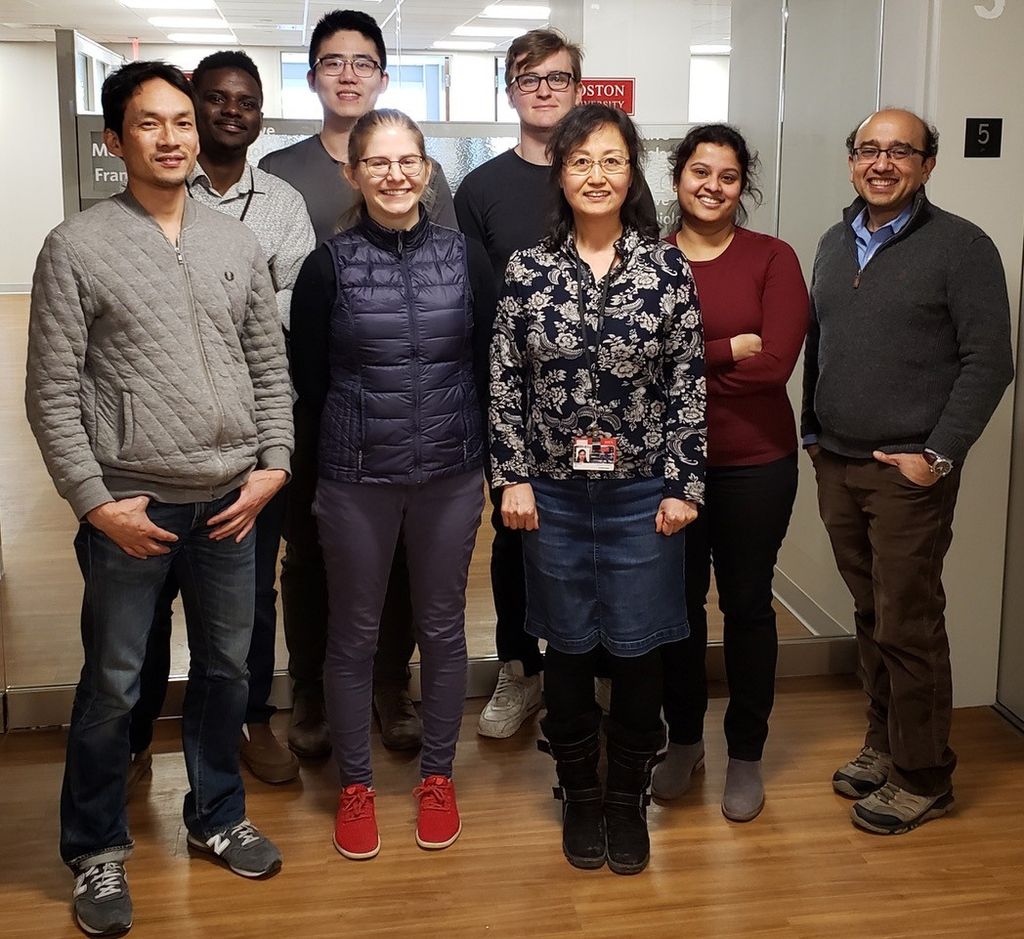Rahm Gummuluru, Ph.D.
Professor and Vice Chair of Virology, Immunology & Microbiology
650 Albany Street
Office: X343C; 617-358-1774
Lab: X341; 617-358-1773
rgummulu@bu.edu
See BU Profile for additional information and publications.
 Cell Biology of HIV: We study interactions of HIV with myeloid cells, such as conventional dendritic cells or macrophages. Whilst HIV-1 capture by dendritic cells and macrophages can result in phagocytosis and lysosomal degradation of endocytosed virus particles, studies from our laboratory have defined a novel mechanism of viral preservation and dissemination. Selective incorporation of the ganglioside, GM3, in the virus particle membrane results in binding and capture of the virus particle by the myeloid cell-specific sialic acid binding lectin, CD169 (SIGLEC1), and sequestration of virus particles in non-endolysosomal compartments. We are interested in understanding mechanisms by which these CD169+ virus-containing compartments preserve virus infectivity and facilitate cell-associated HIV transmission to CD4+ T cells.
Cell Biology of HIV: We study interactions of HIV with myeloid cells, such as conventional dendritic cells or macrophages. Whilst HIV-1 capture by dendritic cells and macrophages can result in phagocytosis and lysosomal degradation of endocytosed virus particles, studies from our laboratory have defined a novel mechanism of viral preservation and dissemination. Selective incorporation of the ganglioside, GM3, in the virus particle membrane results in binding and capture of the virus particle by the myeloid cell-specific sialic acid binding lectin, CD169 (SIGLEC1), and sequestration of virus particles in non-endolysosomal compartments. We are interested in understanding mechanisms by which these CD169+ virus-containing compartments preserve virus infectivity and facilitate cell-associated HIV transmission to CD4+ T cells.
Innate Immune Sensing – HIV: Macrophages and dendritic cells are equipped with multiple innate immune sensors to detect foreign pathogens and induce type I IFN responses. We are specifically interested in identifying nucleic acid sensing mechanisms that detect HIV infection. These research interests stem from our recent findings that have identified a novel innate immune sensing mechanism in myeloid cells which detects de novo expressed intron-containing HIV-1 RNA (HIV icRNA) and induces MAVS-dependent type I IFN responses. While host recognition of non-self, single- and double-stranded RNA with an uncapped triphosphate group by RIG-I-like receptors (RLRs) is well established, host sensing machinery that distinguishes RNA pol II transcribed viral RNAs such as HIV-1 icRNA from host mRNAs have not been identified. We are actively pursuing studies to identify the cytoplasmic viral icRNA sensing mechanism and the ensuing signal transduction pathway.
HIV Immunopathogenic Mechanisms: Chronic inflammation is the chief driver of morbidity and mortality in HIV-infected individuals. Persistent infection of tissue-resident macrophages contributes to chronic immune activation and HIV-associated non-AIDS complications, and remains a major obstacle to HIV cure strategies. While anti-retroviral therapy (ART) suppresses viral loads to undetectable levels, transcriptionally competent viral reservoirs are maintained in secondary lymphoid tissues. We utilize unique cell models, such as induced-pluripotent stem cell (iPSC)-derived microglia (brain-resident macrophages), and leverage access to clinical cohorts of age-matched uninfected and HIV+ individuals to determine the immunopathological consequences of persistent HIV icRNA expression in tissue-resident macrophages, and its contribution to an accelerated aging phenotype in cART-suppressed HIV+ individuals.
Development of Nanoparticle-based Therapeutics: We are leveraging our discovery of the GM3 – CD169 mechanism of virus particle recognition to develop nanoparticle based targeted drug delivery approaches. In collaboration with Dr. Bjoern Reinhard in the Photonics Center we have developed GM3 ganglioside-incorporating membrane encapsulated, biodegradable nanoparticles (GM3-NPs) for specific targeting of CD169+ tissue-resident myeloid cells. The lipidome and size of GM3-NPs is a mimic of HIV-1 particles and are an innovative, immunologically silent, nano-platform for targeted cell and tissue-specific delivery. These GM3-NPs are being exploited to enhance bioavailability of antiretrovirals and host-directed therapeutics in secondary lymphoid tissues to suppress persistent inflammation that exacerbates HIV-driven immunopathology.